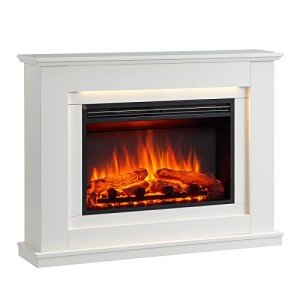The Complete Guide To Fireplace
The Charm and Functionality of Fireplaces: A Comprehensive Guide
Fireplaces have long been a central function in homes, signifying warmth, friendship, and convenience. They are available in various styles, materials, and fuel types, dealing with the choices and requirements of varied property owners. Fireplace Sale explores the multifaceted world of fireplaces, exploring their history, types, setup considerations, and upkeep ideas, while offering FAQs to deal with common questions.
A Brief History of Fireplaces
Historically, fireplaces acted as the cornerstone for cooking and heating homes. In ancient times, an open hearth was often put in the center of a dwelling. Over centuries, architectural developments helped with the advancement of more sophisticated styles, evolving from simple stone structures to elaborate mantels that command modern home.
Key Historical Milestones:
- Ancient Times: Open fires in caves and primitive huts for warmth and cooking.
- Middle Ages: Large, frequently centralized chimney structures in fantastic halls of castles.
- Renaissance: Decorative mantels and styles gain appeal, with the fireplace becoming a sign of wealth and status.
- Industrial Revolution: Advancements in products and producing enable a wider variety of fireplace styles.
- Modern Era: Gas and electric fireplaces end up being prevalent, enabling increased convenience and security.
Types of Fireplaces
Today, many types of fireplaces are offered, each with its unique characteristics. Below is a breakdown of the most typical types:
Fireplace Type
Description
Pros
Cons
Wood-Burning
Traditional fireplaces fueled by wood.
Authentic experience, heat output.
Labor-intensive, requires appropriate venting/maintenance.
Gas
Fireplaces that utilize gas or gas.
Easy to use and keep.
Less ambiance compared to wood.
Electric
Uses electricity to generate heat and flames.
Safe, no venting needed.
Minimal heat output, greater energy costs.
Bioethanol
Uses bioethanol fuel, producing tidy flames.
Ecologically friendly, portable.
Requires routine refueling.
Pellet
Utilizes compressed wood pellets as fuel.
Clean burning, sustainable.
Needs power for operation.
Extra Considerations
When picking a fireplace, it is necessary to consider elements such as:
- Fuel Availability: Consider what fuels are readily available in your area.
- Space and Aesthetics: The size of your living location and your design choices must direct your option.
- Building Regulations: Always seek advice from local policies to guarantee compliance and safety.
Installation Considerations
Setting up a fireplace includes more than simply positioning a structure in your house. Extensive preparation, professional input, and adherence to security codes are paramount. Here are some vital steps:
- Planning: Consider the size and type of fireplace, where it will be put, and its designated use.
- Assessment: Hire a certified specialist to evaluate your home and make sure proper installation.
- Allows: Obtain any needed structure authorizations from regional authorities.
- Products: Select suitable products for the fireplace and surrounding location. Ensure they are fire-resistant and created for your fuel type.
Maintenance Tips for Fireplaces
Routine upkeep guarantees your fireplace runs securely and efficiently. Here are essential upkeep tips classified by fireplace type:
Wood-Burning Fireplaces
- Chimney Cleaning: Have your chimney cleaned up yearly to avoid creosote buildup.
- Inspect for Damage: Check for cracks and damage to the firebox and chimney structure.
- Firewood Storage: Store fire wood far from the home to prevent bug problems.
Gas Fireplaces
- Log Inspection: Regularly examine ceramic logs for cracks and change if required.
- Vent Cleaning: Ensure that vents are complimentary from obstructions.
- Pilot Burner Check: Test pilot lights and ignition systems regularly.
Electric Fireplaces
- Cable Inspection: Frequently check electrical cables for fraying or use.
- Clean Surfaces: Wipe down surface areas routinely to remove dust and debris.
- Smoke alarm: Ensure smoke alarm in the area are functional.
Bioethanol and Pellet Fireplaces
- Fuel Storage: Store fuels in a cool, dry location away from direct sunlight.
- Routine Refueling: Monitor fuel levels and refuel as needed.
- Ventilation: Ensure correct ventilation when using these fireplaces.
Frequently asked questions About Fireplaces
Q1: Do I need a permit to set up a fireplace?
Yes, many municipalities need authorizations for fireplace setups to ensure safety and compliance with local building regulations.
Q2: How frequently should I clean my chimney?
It is suggested to have your chimney cleaned up at least once a year, especially if you utilize your fireplace regularly.
Q3: Can I transform a wood-burning fireplace to gas?
Yes, numerous homeowners transform wood-burning fireplaces to gas for benefit, however seeking advice from an expert is recommended to make sure an appropriate conversion.
Q4: Do electric fireplaces produce heat?
Yes, electric fireplaces can produce heat; however, their primary function is often for ambiance, making them an ideal alternative for those who desire a fire appearance without extensive heating.
Q5: Are bioethanol fireplaces safe?
Bioethanol fireplaces are generally safe when utilized properly; however, they need correct ventilation, and users should follow all manufacturer standards.
Fireplaces not just add aesthetic appeal to homes but also supply useful heating options. With various types, styles, and maintenance requirements, property owners can make educated options that best suit their requirements and lifestyles. Whether opting for the beauty of a wood-burning fireplace or the benefit of a gas model, a fireplace can significantly enhance a living area's comfort and atmosphere. As the hearth remains a centerpiece in homes, it continues to cultivate heat, discussion, and connections amongst family and friends.
